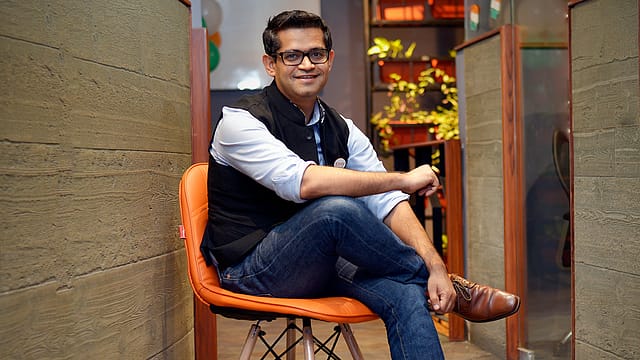We have just started to scratch the surface of the Indian market: Etsy
ADVERTISEMENT

Etsy, the Brooklyn, U.S.-based website, which became popular as an indie, hipster shopping destination for handicrafts and vintage goods, was set up in 2005. Today, it is a Nasdaq-listed company, which it says connects 2 million creative entrepreneurs with about 35 million buyers from nearly every country around the world.
The site works on an interesting model—it has only one platform worldwide, and its sellers supply to a global buyer base. Recently, the company, which has listed Indian sellers for a few years now, started focusing on scaling its business in India, adding more designers, artists, and craftspersons, and organising onboarding workshops across the country.
The craftsy site is also helping small Indian sellers tell their stories, and ship their products to customers globally. As of now, the company has more than 700,000 listings from India.
We met India-Etsy's managing director Himanshu Wardhan, and spoke to him about the e-commerce site’s plans in India. Edited excerpts:
November 2025
The annual Fortune India special issue of India’s Best CEOs celebrates leaders who have transformed their businesses while navigating an uncertain environment, leading from the front.
How do you differentiate yourself from other online players who also sell handmade goods, handicrafts etc?
We have two million sellers across the world. Globally, 87% of these sellers are women, 97% of these sellers are operating from their homes, and 77% are single-person shops. This is completely different from what you would associate with an e-commerce seller in India. Etsy is more about smaller sellers than a few big sellers, selling mass-produced goods, and importing things from China and other geographies and selling in bulk.
Even if it is handicrafts, they buy it in bulk from places like Jaipur and put it on their sites. We are very strict about not having these kind of sellers. We think of our sellers as communities. Till now the e-commerce participants have been restricted to only the traders, we want to broad-base and democratise that.
We are very clear that we want creative people who want to sell their products, we won’t change that in India.
Since you have one global website, instead of a local version for India, where does more business for Indian sellers come from, from the country or outside?
At this point of time it is mostly from outside of India. The kind of Indian products that are available on Etsy, there is a huge demand for it, and people want access to it directly form India rather than buying it from some reseller based in the U.S. or the UK, or any of these markets. Also, for Indian buyers right now, you see the prices in U.S. dollars and you might not have the right payment option. There aren’t the most optimal features for an Indian buyer as this point of time. In due course, we will make those enablements so that part of the business becomes as big.
Are Indian buyers a priority for you?
What excites us about India is the way things are moving here. There are a lot of naysayers who say, it is a bubble. But if you look at the demographics, a sixteen or a seventeen-year old in India right now is completely digitally native, and as of now that person had no earning or little spending power. As soon as that person is 26-27 years old, think about the fundamental shift in commerce that will happen. And then overlay the fact that there is this independent movement happening globally, not just in India, where people are looking for newer designs and not more of the same.
In fact the more automation happens, it might be better for Etsy, because people will probably want more uniqueness when there is more sameness. We see opportunity in medium-to long-term. Indians can still buy, it’s just about more enablements for them and proactively reaching out to them.
What is the kind of demand for handmade, and other kind of products that Etsy sells in India. Do you think Indian consumers prefer branded goods over handmade?
As more and more of the same brands are churning out lower-priced products, people are looking for products that are unique. And it doesn’t have to be exorbitant. It could be slightly premium. There are also special occasions where you don’t want to buy the same brands. There is a large enough audience, which will become a lot more mainstream in the coming years. People are a lot more aware, a lot more conscious, and more confident, they are not looking for western validation. Sure, when it comes to things like track pants or running shoes, people will still go to certain brands, but for certain days or occasions, you want something unique.
What’s next for Etsy in the Indian market?
We have just started to scratch the surface of the Indian market. Over a period of time, I would like to see the buyers also participate on the marketplace side.
We are redefining how e-commerce is understood in India at this point of time. Till now it is about discounted, mass selling. What we are doing is bringing sellers from places like Shahpur Jaat (a market in Delhi) or Bareilly (city in Uttar Pradesh) and give them access to an international audience.
How do you reach a craftsperson who is not digitally-enabled, and bypass the middleman?
A lot of those people don’t even know they are making something they can sell to a buyer in the U.S. We are doing workshops, which have a digital enablement component. We also have onboarding associates who help sellers who are not digitally enabled.
We know that we might not get that seller today or tomorrow but over a period of time. We want every person who is making anything to be on Etsy.
